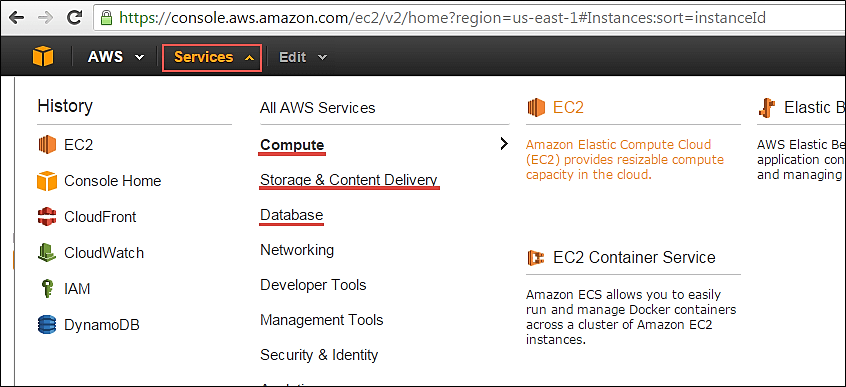How to configure Oracle 11g OEM dbconsole manually
In most of the time DBAs used to go for manual configuration of the database after the database creation. Suppose your database is cloned from other database where you have grid already installed and configured. After the cloning, in the target database the same set of configuration will not work. You have to reconfigure the same.
For that you have to drop the existing configuration first. If it is a new database you can directly configure the grid using emca.
Step 1. Drop the existing configuration if it is having sysman user already present.
Connect to sqlplus with sys as sysdba and check SYSMAN is exist or not
SQL> Select username from dba_users where username='SYSMAN';
USERNAME
------------------------------
SYSMAN
Command to drop the existing configuration
$ emca -deconfig dbcontrol db -repos drop
STARTED EMCA at Jun 23, 2011 5:27:34 AM
EM Configuration Assistant, Version 11.1.0.7.0 Production
Copyright (c) 2003, 2005, Oracle. All rights reserved.
Enter the following information:
Database SID: prod9
Listener port number: 1522
Password for SYS user:
Password for SYSMAN user:
Password for SYSMAN user:
Do you wish to continue? [yes(Y)/no(N)]: Y
Jun 23, 2011 5:27:47 AM oracle.sysman.emcp.EMConfig perform
INFO: This operation is being logged at /data/oracle/cfgtoollogs/emca/prod9/emca_2011_06_23_05_27_34.log.
Jun 23, 2011 5:27:49 AM oracle.sysman.emcp.EMDBPreConfig performDeconfiguration
WARNING: EM is not configured for this database. No EM-specific actions can be performed.
Jun 23, 2011 5:27:50 AM oracle.sysman.emcp.EMReposConfig invoke
INFO: Dropping the EM repository (this may take a while) ...
Jun 23, 2011 5:37:25 AM oracle.sysman.emcp.EMReposConfig invoke
INFO: Repository successfully dropped
Enterprise Manager configuration completed successfully
FINISHED EMCA at Jun 23, 2011 5:37:26 AM
Step 2. Create the OEM GRID repository
$ emca -repos create
STARTED EMCA at Jun 23, 2011 6:41:59 AM
EM Configuration Assistant, Version 11.1.0.7.0 Production
Copyright (c) 2003, 2005, Oracle. All rights reserved.
Enter the following information:
Database SID: prod9
Listener port number: 1522
Password for SYS user:
Password for SYSMAN user:
Do you wish to continue? [yes(Y)/no(N)]: Y
Jun 23, 2011 6:42:17 AM oracle.sysman.emcp.EMConfig perform
INFO: This operation is being logged at /data/oracle/cfgtoollogs/emca/prod9/emca_2011_06_23_06_41_59.log.
Jun 23, 2011 6:42:18 AM oracle.sysman.emcp.EMReposConfig createRepository
INFO: Creating the EM repository (this may take a while) ...
Jun 23, 2011 7:16:31 AM oracle.sysman.emcp.EMReposConfig invoke
INFO: Repository successfully created
Enterprise Manager configuration completed successfully
FINISHED EMCA at Jun 23, 2011 7:16:31 AM
Step 4. Confitgure EM Grid control
$ emca -config dbcontrol db
STARTED EMCA at Jun 23, 2011 8:58:47 PM
EM Configuration Assistant, Version 11.1.0.7.0 Production
Copyright (c) 2003, 2005, Oracle. All rights reserved.
Enter the following information:
Database SID: prod9
Database Control is already configured for the database prod9
You have chosen to configure Database Control for managing the database prod9
This will remove the existing configuration and the default settings and perform a fresh configuration
Do you wish to continue? [yes(Y)/no(N)]: Y
Listener port number: 1522
Password for SYS user:
Password for DBSNMP user:
Password for SYSMAN user:
Password for SYSMAN user: Email address for notifications (optional):
Outgoing Mail (SMTP) server for notifications (optional):
-----------------------------------------------------------------
You have specified the following settings
Database ORACLE_HOME ................ /data/oracle/product/11.1.0
Local hostname ................ localhost
Listener port number ................ 1522
Database SID ................ prod9
Email address for notifications ...............
Outgoing Mail (SMTP) server for notifications ...............
-----------------------------------------------------------------
Do you wish to continue? [yes(Y)/no(N)]: y
Jun 23, 2011 8:59:36 PM oracle.sysman.emcp.EMConfig perform
INFO: This operation is being logged at /data/oracle/cfgtoollogs/emca/prod9/emca_2011_06_23_20_58_47.log.
Jun 23, 2011 8:59:41 PM oracle.sysman.emcp.util.DBControlUtil stopOMS
INFO: Stopping Database Control (this may take a while) ...
Jun 23, 2011 8:59:49 PM oracle.sysman.emcp.EMReposConfig uploadConfigDataToRepository
INFO: Uploading configuration data to EM repository (this may take a while) ...
Jun 23, 2011 9:09:13 PM oracle.sysman.emcp.EMReposConfig invoke
INFO: Uploaded configuration data successfully
Jun 23, 2011 9:09:36 PM oracle.sysman.emcp.util.DBControlUtil configureSoftwareLib
INFO: Software library configured successfully.
Jun 23, 2011 9:09:36 PM oracle.sysman.emcp.EMDBPostConfig configureSoftwareLibrary
INFO: Deploying Provisioning archives ...
Jun 23, 2011 9:10:15 PM oracle.sysman.emcp.EMDBPostConfig configureSoftwareLibrary
INFO: Provisioning archives deployed successfully.
Jun 23, 2011 9:10:16 PM oracle.sysman.emcp.util.DBControlUtil secureDBConsole
INFO: Securing Database Control (this may take a while) ...
Jun 23, 2011 9:11:01 PM oracle.sysman.emcp.util.DBControlUtil secureDBConsole
INFO: Database Control secured successfully.
Jun 23, 2011 9:11:01 PM oracle.sysman.emcp.util.DBControlUtil startOMS
INFO: Starting Database Control (this may take a while) ...
Jun 23, 2011 9:13:04 PM oracle.sysman.emcp.EMDBPostConfig performConfiguration
INFO: Database Control started successfully
Jun 23, 2011 9:13:04 PM oracle.sysman.emcp.EMDBPostConfig performConfiguration
INFO: >>>>>>>>>>> The Database Control URL is https://localhost:1158/em <<<<<<<
Jun 23, 2011 9:13:20 PM oracle.sysman.emcp.EMDBPostConfig invoke
WARNING:
************************ WARNING ************************
Management Repository has been placed in secure mode wherein Enterprise Manager data will be encrypte ile: /data/oracle/product/11.1.0/localhost_prod9/sysman/config/emkey.ora. Pleas d data will become unusable if this file is lost.
***********************************************************
Enterprise Manager configuration completed successfully
FINISHED EMCA at Jun 23, 2011 9:13:20 PM
How to check the status of EM Grid control
To check the status of grid control you have issue emctl status dbcontrol
$ emctl status dbconsole
Oracle Enterprise Manager 11g Database Control Release 11.1.0.7.0
Copyright (c) 1996, 2008 Oracle Corporation. All rights reserved.
https://localhost:1158/em/console/aboutApplication
Oracle Enterprise Manager 11g is running.
------------------------------------------------------------------
Logs are generated in directory /data/oracle/product/11.1.0/localhost_prod9/sysman/log
How to start the EM Grid control
$ emctl start dbconsole
Oracle Enterprise Manager 11g Database Control Release 11.1.0.7.0
Copyright (c) 1996, 2008 Oracle Corporation. All rights reserved.
https://localhost:1158/em/console/aboutApplication
Starting Oracle Enterprise Manager 11g Database Control ................ started.
------------------------------------------------------------------
Logs are generated in directory /data/oracle/product/11.1.0/localhost_prod9/sysman/log
How to stop the EM Grid Control?
$ emctl stop dbconsole
Oracle Enterprise Manager 11g Database Control Release 11.1.0.7.0
Copyright (c) 1996, 2008 Oracle Corporation. All rights reserved.
https://localhost:1158/em/console/aboutApplication
Stopping Oracle Enterprise Manager 11g Database Control ...
... Stopped.


